We quickly realized that there was not much to expect from the dark charred ridges of the volcanoes. On the other hand, the ground at the feet of these volcanoes was often of a magnificent red or yellow color which well reflects heat, is made of another material, it was therefore useless to work the dangerous ridges, better to stay outside the cone.
The geology around the Atacama Salar is interesting for glider pilots, see the topographic profile below: the chain of volcanoes of the Andean Cordillera located northeast of the Salar is the result of the subduction of the oceanic plate, accompanied with an intense volcanic activity, and formed during the Jurassic period, -200 to -150 million years.

Volcanic rocks have a rather complex and limited reaction to the formation of thermals, due to their high capacity for absorbing heat. The active Lascar volcano, although hot and steaming, does not generate any worthy lift (photo below).
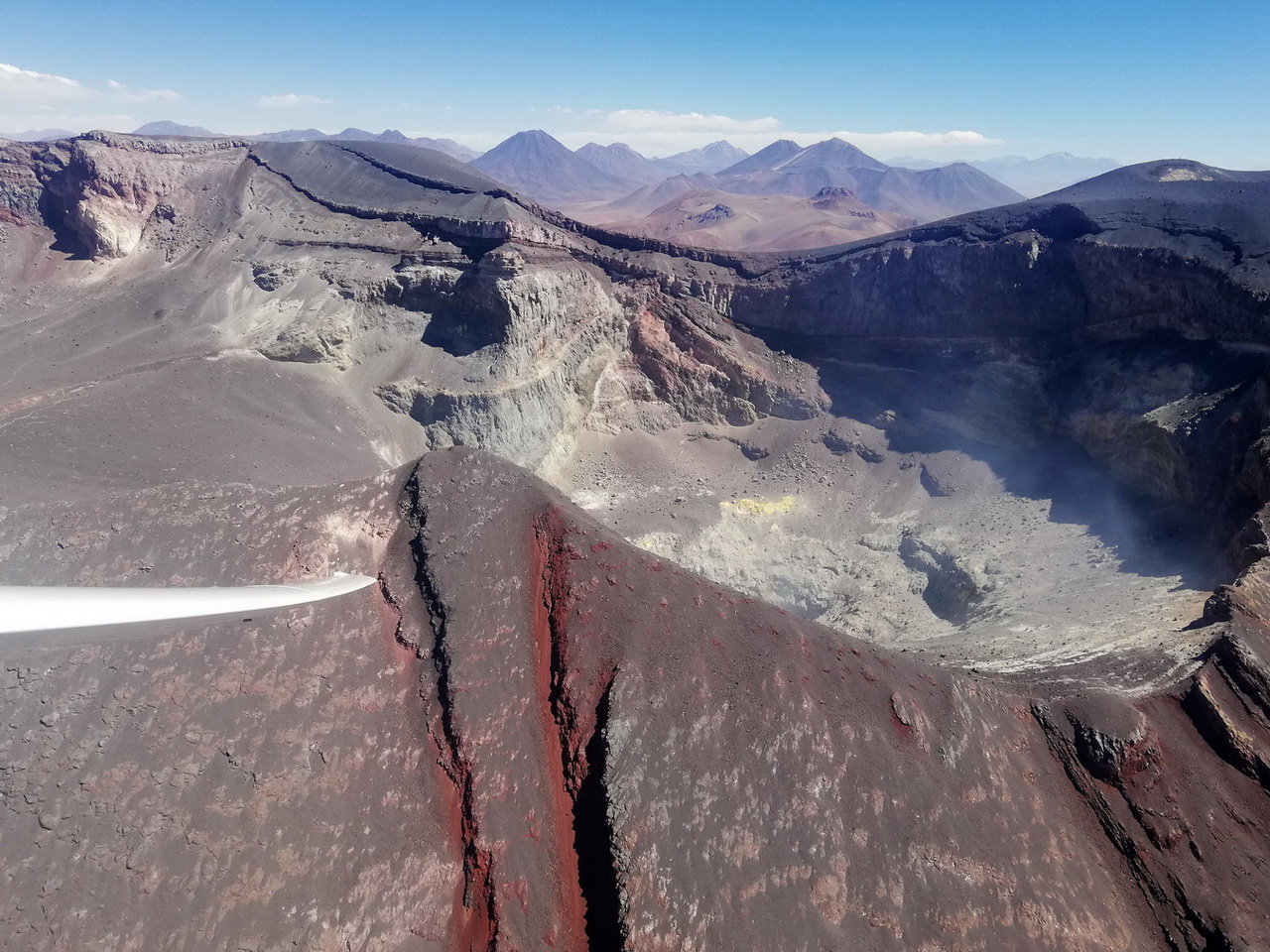
After a first rather disappointing visit – from a thermal point of view -, I decided not to return to the crater side, too dangerous, this volcano is active. We will climb only downwind in convergence lift.
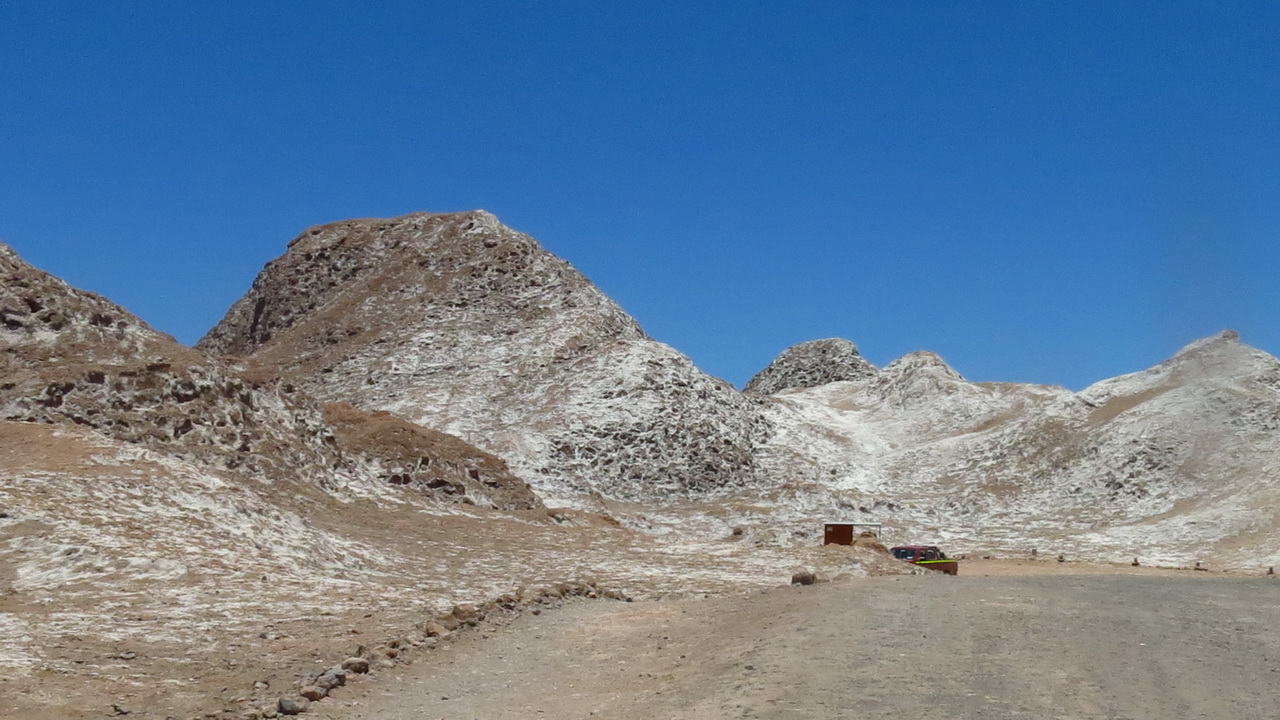
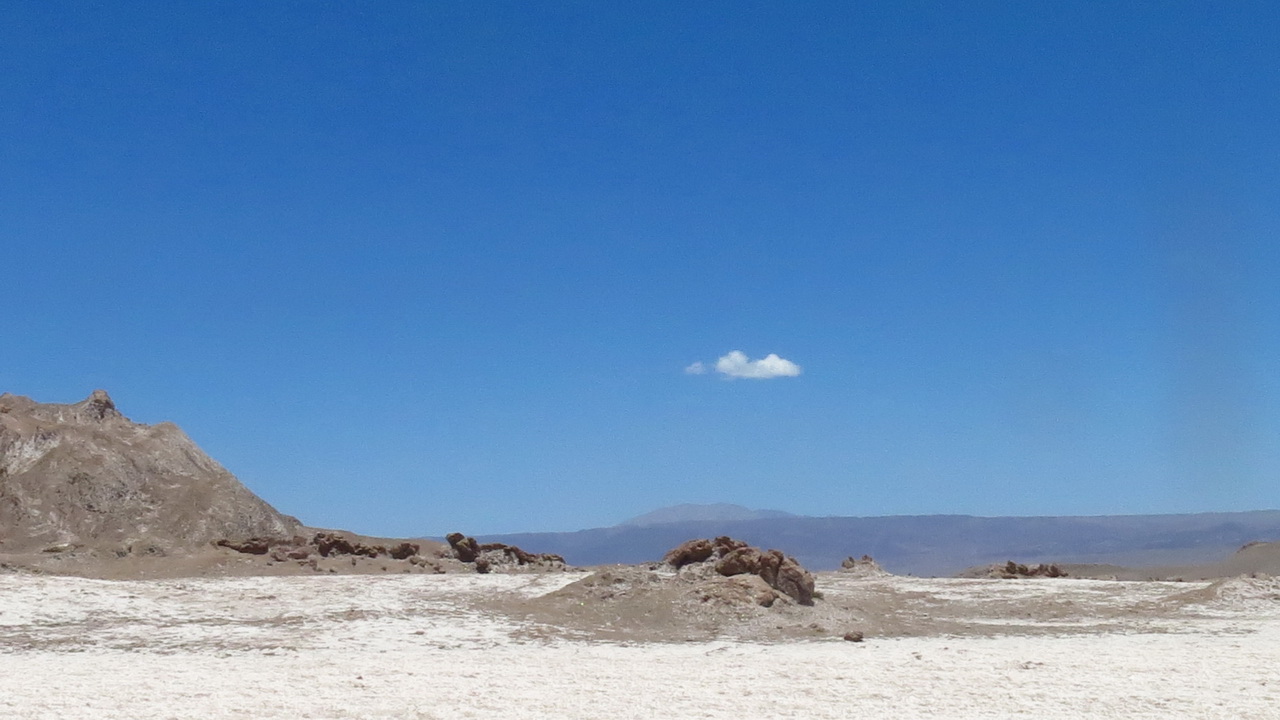
The Cordillera de la Sal, called “Moon Valley” for tourists. Formerly the motor of the local economy for the production of rock salt, today abandoned to mountain bikers who want to burn their skin. The little museum that explains the formation of this geological anomaly is worth a visit.
Above the salt crust, at the end of the Salar, a cumulus is visible on the Cerro Quimal (4.278 m), the highest point of the Cordillera de Domeyko. The thermal behavior of this Cordillera is much healthier and classic than that of the Altiplano.
The highest point is the Cerro Quimal at 4,278 m, therefore acceptable, but above all, the pass connecting Calama to San Pedro, the Paso Barros Arana, is only 3,430 m MSL and 30 km from the aerodrome of San Pedro (2,400 m MSL), L/D 30, reasonable without wind. It will therefore be our preferred starting point and a must for the return in case of doubt, in view of a possible restarting the engine in reach of San Pedro (never practiced).
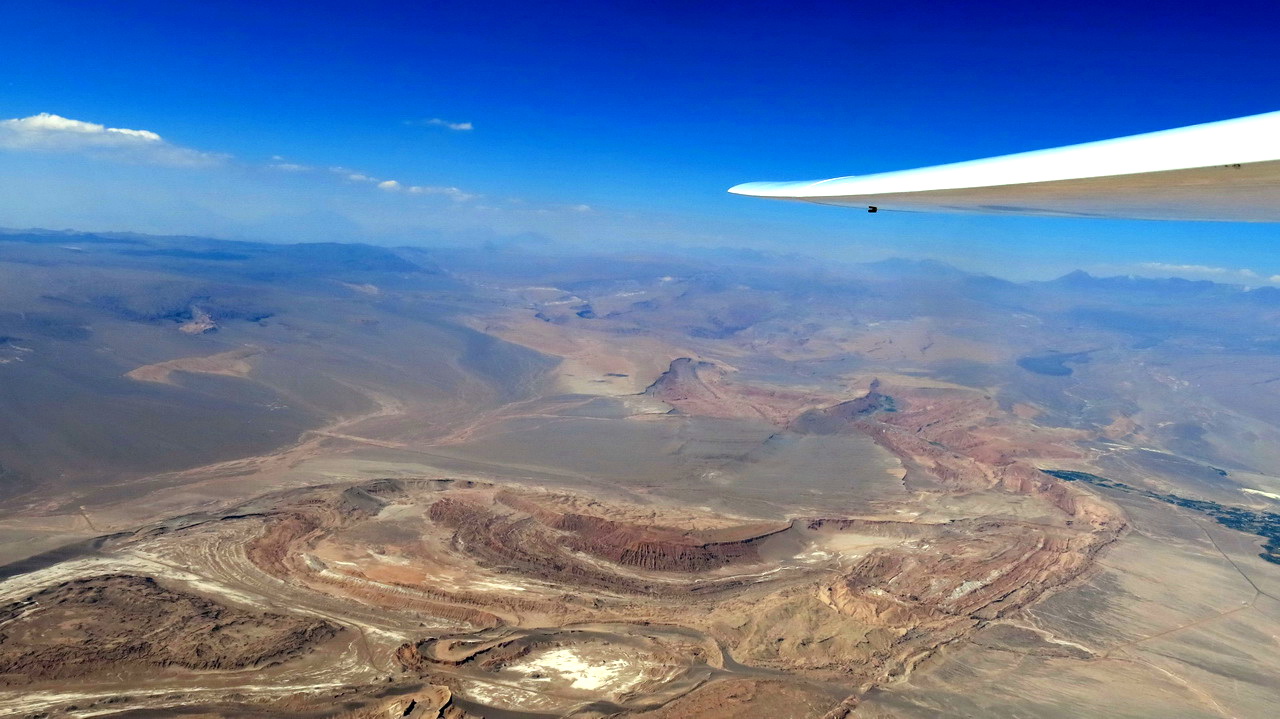
The Moon Valley seen from the sky, looking towards the North. You can see the northwest end of the tourist oasis of San Pedro under the right wing. We can clearly see the difference in quality between the thermals of the Domeyko Cordillera, which are still very active, and those of the range of volcanoes, which is on the way to extinction.
The Atacama Salar itself can be thermally active, especially if the humidity allows the formation of cumulus, we sometimes took advantage of it, always on the edges and on tiptoes, in the contrast areas near the lakes or oases. We have observed powerful “remolinos“, dust devils, near the runway of San Pedro. It will be necessary to be very careful during takeoffs and landings, their violence can be fatal for the glider near the ground. SkySight has always considered the Salar as thermally inactive, this has to be corrected. It should be noted that this Salar is not completely dry, there is a lot of humidity under the salt crust and a large number of small lakes where one swim and where colonies of flamingos live. This Salar is an ancient paleolake which evaporated during the period of great heat wave in the period 3,000 to 1,500 years AC. It is therefore extremely young and such a natural environmental cataclysm may give us food for thought about our tiny global warming that is so much in the news.
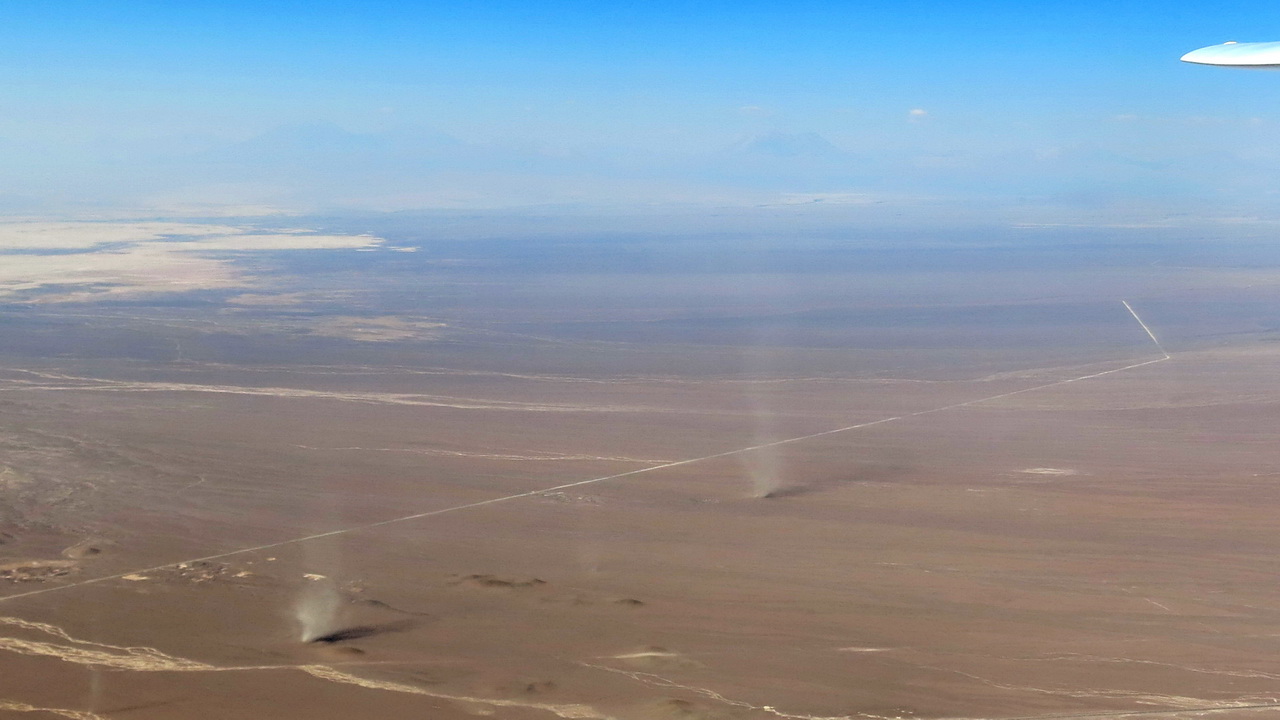
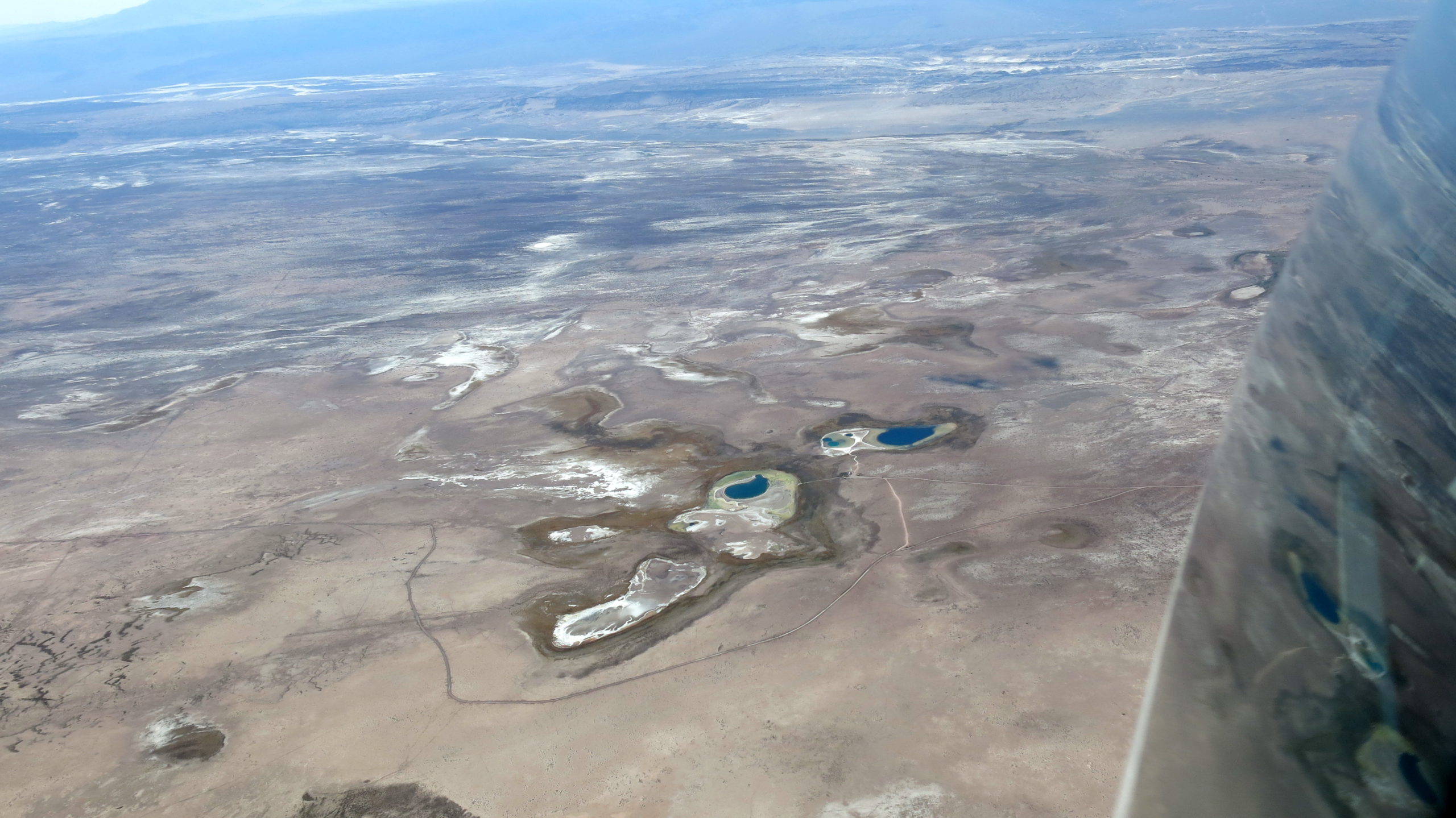
The dust devils, called “Remolinos”, can be very dangerous when formed at the edge of the runway. They hardly climb above 1.000 m ground but are very violent.
The Atacama Salar is in fact dotted with small lagoons, called “lagunas”, objects of abundant and colorful fauna. The one in the center of the photo is the “Laguna Cejar” where we had a swim with the flamingos.
